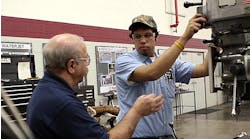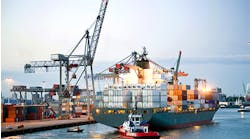By my reckoning it’s been about 20 years since the first articulation of “the New Economy”, the name given by 90s-era financial analysts for what we now casually call the Internet. They needed a way to explain why projects with no performance history, no reliable examples, and only vague business plans were drawing investment capital away from the traditional blue-chip offerings.
It became obvious fairly early that the “information superhighway” was going to be defined by commerce, not information. Information is valuable, but it does not by definition “move.”
At that time, movement seemed to be critical. All the data buzzed in tiny volumes from one mainframe computer to another, and the enterprises operating online scrambled to find the best way to make their presence known. Most of them lurched and paused, and tried different ways to establish an online presence, to replicate their real-world existence in the virtual plane. And, it was embarrassing in many ways, because well respected enterprises supplying useful goods and materials to satisfied customers were sometimes demonstrated to be useless presences in the virtual world.
One of my particular memories of that period was the outrageous simplicity with which laughable business start-ups were able to draw investment capital, with no collateral, no record of performance, or proof of demand for their service offering. Pets.com, eToys, Garden.com, and other improbabilities were white-hot properties for a time, defining the idea of a New Economy, in contrast to the old economy, which did ordinary things like design and manufacture capital goods.
In the passing years, most of what has changed involves the scale of the Internet: information has become a more valuable feature of the virtual world, and communication and entertainment have been added as further functional variations. Still, as functions of the online platform, these three are still defined by the original, commercial model – the customer must provide money (or something else, like contact data) in order to gain the desired result (a product, some more information, or simply access.) The interactions are essentially commercial, though the subsequent development of social media has converged with the original marketplace, creating a lot of congestion on the highway.
Having matured through its toddler stage and some awkward adolescence, the New Economy is simply “the economy” now, and the commercial model defines how enterprises and individuals perceive their presence in the world. Maybe we were “programmed” to be commercial beings all along, but the quest for recognition has revealed something about human nature that in times past, about 20 years ago, would have been easier, and perhaps wiser or safer to ignore.
Not incidentally, that “old economy” is still with us, and while its transformation has been much slower over the past two decades, the results may provide some deeper insight about maintaining individuality, integrity in a world governed by commercial transactions. You see, being recognized ‘online’ was rarely a first objective to a business manufacturing capital goods. Their first problem was the competition for capital from lenders whose standards were changed by low-overhead, high-return promises of New Economy ventures.
The next problem was the sudden appearance of competitors knocking off apparently comparable capital goods, and wooing customers from half a world away.
Of course, manufacturers also had to keep up with the natural development of their businesses — the greater accuracy of data, the higher reliability of process control. They’ve done this, and they’ve incorporated the faster communication and delivery standards that are the emblems of the modern commercial economy. And their adherence to product design and reliability remains, too, continuing to prove that the value of a product or service is based on much more than its “availability.”
And now the old economy and the New Economy are predicted to converge in a new dimension of information and commerce described as the Internet of Things — every product a universe of data defined by facts, not promises. The IoT will have to find ways to assign value to goods based on more than cost and availability. If that happens, the new New Economy will be better than the old new one.









